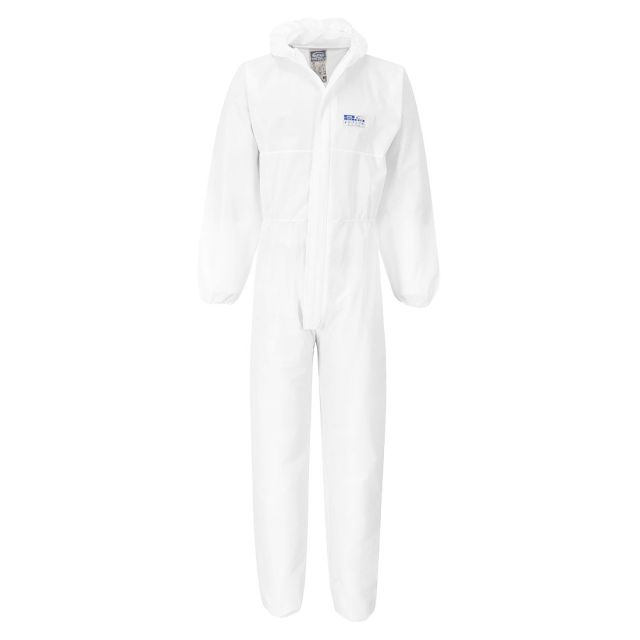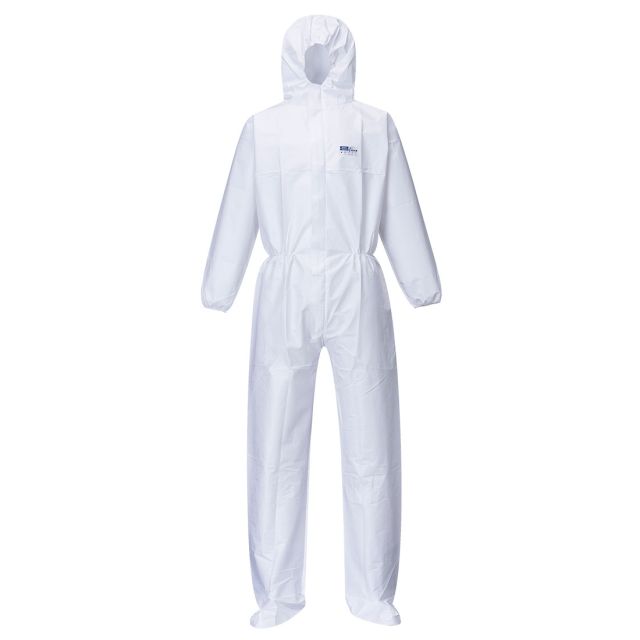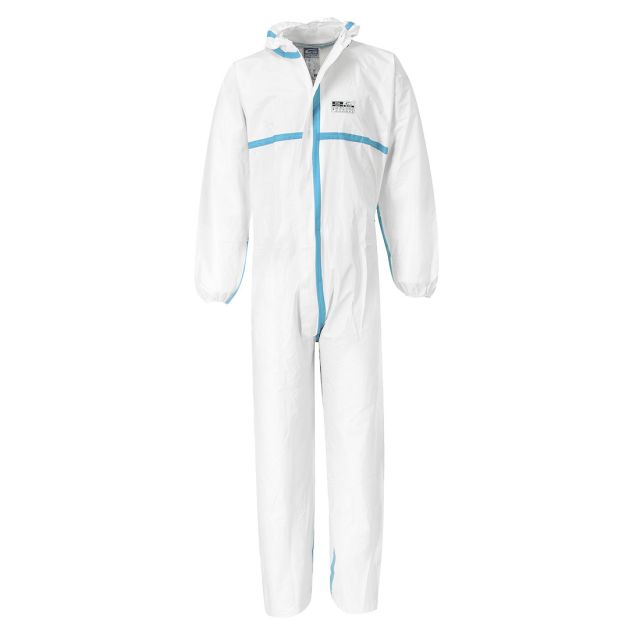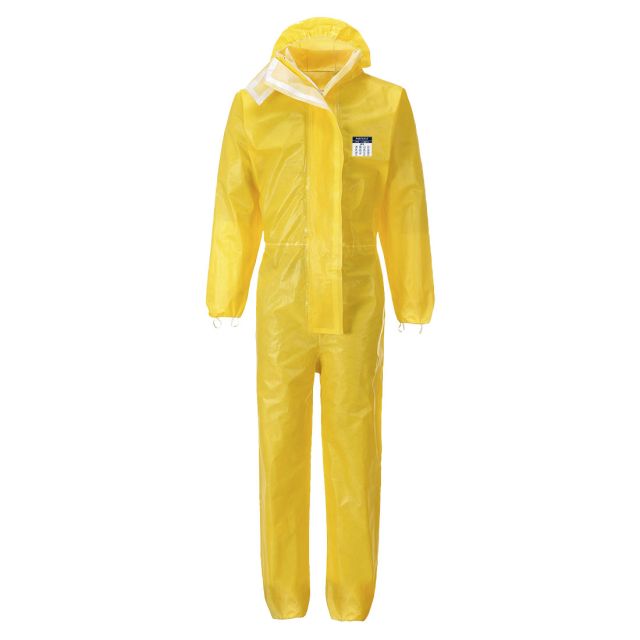The Essential Guide to Disposable Coveralls: Uses, Types, and Industries
In many industries, disposable coveralls have become an essential aspect of personal protective equipment (PPE). These single use garments provide an effective way to protect workers from hazardous substances, pollution, and other workplace hazards.
The varying applications of these single-use garments, the types that meet UK safety standards, the industries that employ them, and the specialised options such as flame retardant and arc flash disposable coveralls are all discussed in this article.
- Page Contents
- A Short History of Disposable Coveralls
- Uses of Disposable Coveralls
- Industries That Rely on Disposable Coveralls
- Types of Disposable Coveralls
- Specialised Disposable Coveralls
- Conclusion
A Short History of Disposable Coveralls
Disposable coveralls have advanced to coincide with developments in workplace health & safety. They were first developed to fill demand for safety clothing that could be discarded at the end of a shift after coming into contact with potentially hazardous substances.
Today, they have become essential in a variety of high-risk workplace environments. They are used in a wider range of industries due to advancements in design and materials.
Uses of Disposable Coveralls
As opposed to the reusable and washable counterparts, disposable overalls, are intended to be used just once. This keeps pollutants from being transferred from one environment to another, preserving safety and hygienic conditions.
Disposable coveralls are used in many different workplaces where it's important to guard workers against pollutants, dangerous chemicals, or environmental dangers. They are also used to prevent contamination of products. Significant uses include:
Asbestos Removal
Because asbestos fibres are extremely hazardous when inhaled, disposable coveralls are essential for full-body protection during asbestos removal. In such a setting, type 5 coveralls are usually used due to their ability to keep dangerous dust and particles away from other clothing and can be discarded safely after use.
Hazardous Material Handling
Disposable coveralls protect against spills, splashes, and airborne pollutants in industries where workers handle chemicals, biological substances, or other hazardous materials. Workers might wear Type 3 or Type 4 coveralls with liquid-tight and spray-tight protection, depending on the degree of risk.
Medical and Laboratory Settings
Disposables are often required in medical and laboratory environments to maintain sterility and provide protection against infectious organisms. They are essential in labs handling pathogens since they stop the transmission of infection between work spaces and personnel.
Industrial Cleanup
Disposable coveralls have become essential for protecting workers against the hazardous substances they frequently come into close proximity to during deep cleanups. These garments ensure worker safety and prevent contaminants from leaving the cleaning area, whether dealing with chemical spills, polluted environments, or hazardous debris.
Disposables classified as Type 4 or Type 5 are often used for these jobs.
Food Processing
It's absolutely essential to maintain a hygienic atmosphere in the food production industry. Disposable coveralls act as a barrier between the worker's body and clothing and the food being processed which prevents the contamination of foodstuffs.
They help hygienic standards by preventing food contamination from employees' clothes, skin or hair and their disposable nature prevents cross-contamination of ingredients and allergens.
Pharmaceutical Manufacturing
Disposable coveralls help in maintaining a cleanroom environment in areas where contamination might have serious consequences. They ensure the strict hygiene standards that apply to the manufacturing of pharmaceuticals can be met while protecting the product and the worker.
Pest Control
When treating infestations, especially when fumigating areas or handling the poisonous compounds used in insect eradication, workers in the pest control industries typically wear disposable coveralls with other PPE.
Industries That Rely on Disposable Coveralls
Several industries depend on disposable coveralls to protect their workforce and ensure compliance with safety standards:
Construction and Demolition
Particularly in asbestos removal and other hazardous material handling, disposable coveralls are vital for protecting workers from inhaling or coming into contact with harmful particles. For example, Asbestos removal, requires Type 5 coveralls to prevent the entry of hazardous dust.
Healthcare and Laboratory Work
To prevent cross-contamination between medical personnel and patients, the healthcare sector uses disposable coveralls, especially in high risk environments such as ICU where infectious diseases may be prevalent.
These garments are essential in labs to stop the transfer of chemicals and infections, particularly in places where hazardous or highly infectious materials are present.
Chemical Manufacturing
Personnel in chemical manufacturing facilities often have to wear disposable coveralls in order to protect themselves against unintentional chemical splashes, vapours, and spills. Depending on the particular risks involved, coveralls of types 3 and 4 are commonly used.
Agriculture
Workers in agriculture can protect themselves from pesticides, fertilisers, and other dangerous substances by using disposable coveralls. By preventing hazardous materials from coming into contact with the skin, ensuring the safety of agricultural workers.
Pharmaceuticals
Disposable coveralls are essential in maintaining the sterility of pharmaceutical manufacturing environments. They help to prevent product contamination during manufacturing, preserving the integrity of the pharmaceutical and protecting the consumer.
Energy and Utilities
Workers in the energy industry, especially those in the oil and gas industry, are regularly at risk of exposure to hazardous compounds. In locations where poisonous or combustible materials are prevalent, disposable coveralls provide an important layer of protection against these risks.
Types of Disposable Coveralls
Disposable coveralls are classified according to UK and EU safety standards, which ensures garments meet the specific needs of each industry. The types of coveralls include:
Type 1
Offers protection against hazardous gases and liquids and possibly uses an air supply line. Because these coveralls are gas-tight, they may be used in the riskiest environments, such as chemical spills involving highly hazardous substances. They are comply with EN 943 part 1 standards.
Type 2
Though not gas-tight, these coveralls retain a positive pressure. They are appropriate for industrial settings where strong liquid and dust protection is required but complete gas-tight protection is not essential as they provide protection against liquids, vapours, and dust. They meet EN 943 part 1 standards.
Type 3
Coveralls that are watertight with sealed seams to provide protection from strong blasts of liquids. When workers may be exposed to huge amounts of liquid chemicals, like in chemical manufacture or large-scale industrial cleaning, workers need to wear coveralls that satisfy EN 14605 standards.
Type 4
Coveralls that are resistant to chemicals and offer temporary protection from sprays. They are not as heavy-duty as Type 3 but nonetheless necessary in situations where there is a chance of exposure to liquid chemicals. These clothes also meet EN 14605 standards.
Type 5
Designed to provide protection against asbestos and other dangerous dusts and airborne particles. In sectors such as construction and demolition, type 5 coveralls are essential, particularly when removing asbestos, when it's critical to keep dust away from clothing and within a secured area. They are compliant with EN ISO 13982-1.
Type 6
These coveralls provide basic protection against light sprays and splashes of liquid chemicals. Suitable for low-risk environments, Type 6 coveralls meet the EN 13034 standard and are used in situations where minimal chemical exposure is expected.
Specialised Disposable Coveralls
Besides the standard varieties, there are specialised disposable coveralls made for particular risks:
Flame-Retardant Disposable Coveralls
These coveralls are made from materials that resist ignition and reduce the spread of flames. They are crucial in environments where there is a risk of fire or explosion, such as in oil and gas industries or during certain manufacturing processes.
Flame-retardant disposables add an extra level of safety, ensuring workers' safety even in the case of a serious incident.
Arc Flash Disposable Coveralls
During electrical operations, arc flashes can occur, which can be extremely hazardous. Disposable Arc flash coveralls protect workers from this risk. just like the standard non-disposable arc-flash coveralls, the materials used to make these throwaway garments are resistant to extreme heat and significant energy discharges giving workers in the utilities and energy industries vital protection.
Conclusion
Disposable coveralls are vital for maintaining safe working practices in a variety of sectors by providing defence against a wide range of risks, such as asbestos and chemical exposure.
These single use garments come in a variety of types designed to meet particular safety standards, are essential for employees working in hazardous conditions. Organisations can make sure their employees are sufficiently reducing the risk of harm and contamination by choosing the right kind of disposables. XAMAX® is a trusted supplier of PPE and provides a large selection of disposable coveralls that meet the various demands of different sectors, ensuring general safety and compliance.










